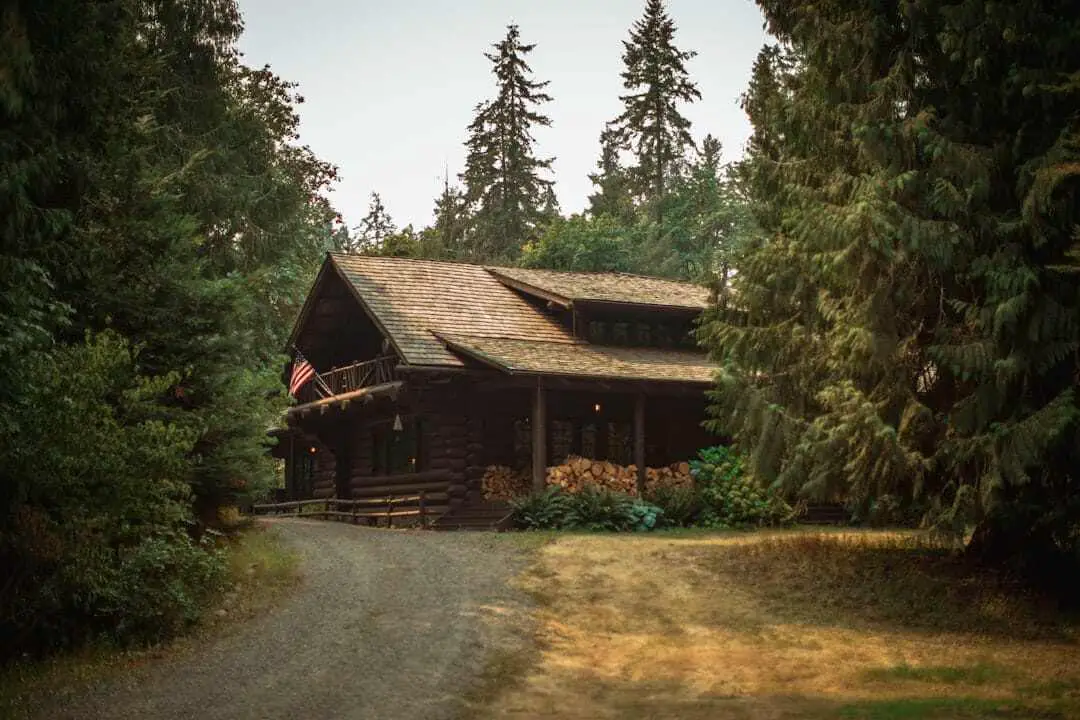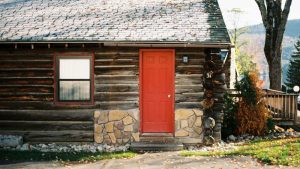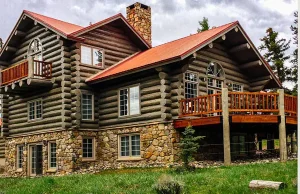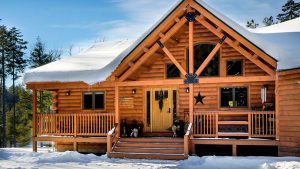There’s something magical about a log cabin. The rustic charm, the cozy atmosphere, and the connection to nature make it a beloved retreat for many. However, owning such a unique structure comes with its own set of responsibilities. Log cabins require regular maintenance to ensure they remain safe and beautiful for years to come.
Imagine waking up in your log cabin, sipping coffee while surrounded by towering trees and the sounds of wildlife. To keep that dream intact, it’s essential to understand how to properly care for your investment. Whether you’re new to log cabin ownership or have had yours for some time, this guide will help you maintain its integrity and beauty throughout every season. Let’s dive into what it takes to protect your slice of paradise!
Understanding the Importance of Log Cabin Maintenance
Owning a log cabin is like possessing a piece of nature’s artistry. However, without regular maintenance, that beauty can fade quickly.
Log cabins are constructed from natural wood, which is susceptible to the elements. Rain, snow, and sun can all take their toll over time. If left unchecked, minor issues can escalate into major problems.
Regular care preserves not just aesthetics but also structural integrity. Ensuring your logs remain sealed helps prevent rot and insect infestations.
Beyond protection, maintenance enhances longevity and comfort. A well-maintained cabin provides a cozy refuge for years to come.
Investing time in upkeep pays off in the long run—both in enjoyment and value preservation. Your log cabin deserves attention; after all, it’s not just a building—it’s your home amidst nature’s embrace.
Common Issues Faced by Log Cabin Owners
Log cabin owners often encounter a variety of challenges that can impact the longevity of their homes. One common issue is moisture intrusion, which can lead to mold and rot. This problem usually arises from inadequate sealing or poor drainage.
Pest infestations are another frequent concern. Termites and wood-boring beetles can wreak havoc on the structural integrity of your cabin if not addressed promptly. Regular inspections are essential to catch these unwelcome guests early.
Additionally, log settling is something many homeowners face over time. As logs dry out and settle, gaps may appear between them, creating potential entry points for water and pests.
Chalking paint or stain also presents an aesthetic challenge while reducing protective qualities against the elements. Keeping up with regular maintenance will help mitigate these issues before they escalate into major repairs.
Essential Tools and Materials for Log Cabin Maintenance
When it comes to maintaining your log cabin, having the right tools is essential. A reliable set of tools not only makes the job easier but also ensures that you can tackle various maintenance tasks efficiently.
Start with a sturdy ladder for easy access to high areas. This will help you inspect and clean your roof without any hassle.
You’ll need basic hand tools like hammers, screwdrivers, and pliers for minor repairs. These are indispensable in addressing everyday wear and tear.
A pressure washer can be invaluable too, especially for cleaning exterior surfaces without damaging the wood grain. Just ensure you’re using a low-pressure setting to protect the logs.
Don’t forget protective gear! Gloves and safety goggles will keep you safe while working on repairs or applying treatments.
Invest in quality sealants and stains specifically designed for log cabins. They provide protection against moisture and UV rays while enhancing natural beauty.
Step-by-Step Guide to Maintaining Your Log Cabin
Start by inspecting the exterior of your log cabin. Look for signs of rot, cracks, or insect infestations. Addressing these issues early can prevent more significant damage down the line.
Next, clean the logs using a mild detergent and water solution. A soft brush works wonders to remove dirt without damaging the wood’s surface.
Once clean, consider applying a protective sealant. This not only enhances the appearance but also adds an extra layer against moisture and UV rays.
Regularly check gutters and downspouts to ensure they’re clear. Proper drainage is essential in preventing water from pooling around your foundation.
Don’t forget about interior maintenance too! Check for drafts around windows and doors; weather stripping can help keep energy costs down while maintaining comfort inside.
Perform seasonal inspections after heavy storms or harsh winters to catch any new problems before they escalate.
Tips for Preventing Future Damage and Wear
To keep your log cabin looking its best, start with proper sealing. Invest in high-quality sealants that repel moisture and prevent rot. Regularly check these seals for wear and tear.
Another crucial tip is to manage vegetation around the cabin. Trim back trees and bushes that might cause damage during storms or pests hiding out near your structure.
Ensure gutters are clean and functioning well. This simple maintenance task helps channel water away from the logs, reducing potential water damage.
Consider installing a good drainage system if you’re on a slope. Proper water diversion will protect the foundation of your cabin over time.
Maintain an ideal indoor environment by controlling humidity levels. A dehumidifier can work wonders in preventing mold growth within your cozy retreat.
Seeking Professional Help: When to DIY and When to Hire a Pro
Understanding when to tackle repairs yourself and when to call in a professional can save you time, money, and headaches. DIY projects can be rewarding, especially for minor maintenance tasks like cleaning gutters or applying sealant.
However, certain issues require expertise beyond basic handyman skills. If you’re facing significant structural damage or intricate problems with your log cabin’s insulation, it may be wise to hire a pro. Specialists have the experience needed to identify underlying issues that might not be immediately visible.
Before making any decisions, assess your comfort level with tools and techniques. If the task involves heavy lifting or complex repairs that could compromise safety, don’t hesitate to reach out for help.
Remember that investing in professional services now can prevent costly repairs down the line. Prioritize quality work over saving a few bucks; your log cabin deserves the best care possible.
Budgeting for Log Cabin Maintenance
Budgeting for log cabin maintenance is crucial to ensure longevity. Start by assessing your cabin’s condition. Identify areas that need immediate attention versus those that can wait.
Create a detailed list of potential expenses. Include routine tasks like staining and sealing, along with unexpected repairs such as pest control or structural issues. Allocating funds for these will prevent financial strain later on.
Set aside a specific percentage of your budget annually solely for maintenance purposes. This proactive approach cushions you against surprise costs.
Consider seasonal changes when planning expenditures. Certain times of the year may require more intensive care due to weather-related wear and tear.
Don’t forget about tools and supplies in your budget, too. Investing in quality equipment can reduce long-term costs by minimizing repairs down the line. Prioritize wisely, focusing on what will preserve the integrity of your beloved log cabin.
Conclusion
Maintaining your log cabin is an investment in both time and resources, but the rewards can be substantial. A well-kept log cabin not only retains its structural integrity but also enhances its beauty and charm. Regular maintenance prevents minor issues from escalating into costly repairs down the line.
By taking proactive steps to care for your cabin, you create a welcoming environment for family and friends. Your retreat becomes a sanctuary that stands the test of time, providing countless cherished memories for generations to come. Embracing this responsibility allows you to enjoy all the unique qualities that make log cabins so special.
Maintaining your log cabin means preserving a piece of history while ensuring it continues to serve as a cozy refuge amid nature’s splendor. Whether it’s through diligent upkeep or thoughtful renovations, committing to proper maintenance will yield years of enjoyment in your beloved space.




